Greetings!
Uncle Travelling Matt
This week’s offering is a day early since I shall be attending a funeral tomorrow and in no mood afterwards for blogging. Events like that make you think about things and assess where your life is at. Indeed, it was a funeral many years in 1996 that inspired me to make the leap and try living abroad. Time is limited and if you want something, then go for it. That has always stayed with me and served me well as an inspiration. So, if you are wondering whether to take the plunge and visit that country that you’ve always wanted to visit and never got round to, then please do it.
You won’t regret it.
Keep travelling!
Amritsar
Back in Amritsar, I was dropped off in the old city and took a leisurely walk back to my hotel. En route I checked out a few of the shops and made a couple of purchases: a Punjabi dictionary and English textbook for my students back home. I also passed a shop where they made custom rubber stamps, (you know, the type they ink into passports), and thought that it would be rather cool to have one with my name so I placed an order and then went for another tasty yet unbelievably greasy “Punjabi Menu” meal to celebrate. I then went to a travel agent to book my onward train ticket back to Delhi for the following night before heading back to the one place that I wanted to be.
Before coming out to India, people had said to me that you have to see the Golden Temple by night and they were right. The gold glitters and the reflections in the pool are beautiful. Still busy yet tranquil, I sat on the parikarama and drank it all in. the truth was, prior to setting foot inside the complex that morning, I'd neither been particularly impressed with nor enjoyed India all that much. Still, outside of the Golden Temple and the Sis Ganj Gurdwara, I was so far none too impressed with the India that I saw; filthy and scruffy, like Ho Chi Minh City in Vietnam where I lived for two years and never managed to fall in love with. However, sat there as the voice of the granthi accompanied by the sounds of the ragis washed over me and the moonlight glittered on the waters of the Amrit Saroyar, I knew that, if only for that moment alone, coming to India had been truly worth it.
That night it happened.
That which I'd been dreading; that which I'd strenuously tried to avoid.
I blame the “Punjabi Menu”.
Either that or the shock of turning on the telly in the middle of the night and learning that, for the first time in six hundred years, the Pope had decided to resign.
Delhi Belly struck and when I slept – which was for short periods only – that sleep was filled with chaotic, nonsensical dreams, weirder than even high-kicking Pakistani soldiers, temples of gold and resigning popes. Past experience had taught me that food poisoning only lasts twenty-four hours but during those hours you feel like the living dead and absolutely nothing is possible. So, I would not be seeing anymore of Amritsar. Oh well, at least I'd seen the Golden Temple.
Yet the following morning I was up and, although weak, tired and ready to vomit, it was clearing! Who knows, perhaps staying off the meat had been worth it after all? Or maybe it was simply the praying? By eleven I was up and out, ready to see what Amritsar has to offer beyond its two star attractions.
My guidebook informed me that one of the main sights worth seeing was the Sri Durgiana Temple, the main Hindu holy site in town and referred to as the Silver Temple, presumably to differentiate it from its more illustrious neighbour. I decided to stroll through the old city to reach it rather than take a rickshaw which I did, marvelling at some of the crumbling Mughal Era buildings on the way before I hit the main drag of the Circular Road which I wandered along for some distance before I realised that I'd somehow managed to miss a temple as big as the Golden Temple and my weakened state was not really conducive to walking any further so I fought my stubbornness and hailed a rickshaw.
And the rickshaw that I hailed took my breath away. Literally. The man who pedalled me for pennies stank to high heaven making me wish to turn my head away. I realised that he probably slept on the street, had only one set of clothes and had not bathed for months. After the stark cleanliness of the Golden Temple, this reminder of India's grinding poverty hit me, and not just through the nostrils. Upon arrival I went against the habit of a lifetime and tipped him, especially since the rate that he charged me was the lowest that I'd come across so far.
When I entered the compound of the Sri Durgiana Temple I did a double-take. Wait a minute, hadn't I just left this place behind? For the so-called Silver Temple is not silver at all, (the name comes from its silver doors), but instead rather more gold. In fact it is, all in all, a pretty good lookalike of the Golden Temple itself: a small square golden mandir with four entrances sat in the middle of a large rectangular pool. Hell, they were even offering langar! (Which I didn't dare try, my stomach being far from settled). Intrigued, I walked the (far less crowded) causeway to the temple itself but here I began to notice the differences: the Golden Temple had been scrupulously clean and smart, this place was dusty and peeling at the edges in a very Indian way; in the pool here there were statues of various gods and goddesses, but these, alas, smacked more of Disneyland than divinity, and inside the temple it was all completely different: whereas the Hari Mandir Sahib had been tasteful and classy, the interior of the Silver Temple was merely tacky, a phantasmagoria of glass mosaic, more Great Yarmouth fairground than Guru Ram Das. Most telling of all though was the focus of the whole complex, for the devotees inside all had their eyes fixed upon a large idol of the goddess Durga rather than the book as in their temple's Sikh sister.1
I returned to the parikarama rather exhausted by all my exertions and sat down in the shade to think for this place fascinated me as it appeared to shed more light on my earlier trains of thought. Two temples of two different faiths in the same city and looking virtually identical, yet why? My guidebook informed me that the Silver Temple was in fact built in the 16th century making it older than its famous neighbour, so was it that the Golden Temple was in fact modelled on this – and other similar – Hindu temple? That made sense for the name 'mandir' generally refers to a Hindu place of worship and those are generally square, that being seen as a sacred shape in the faith, whilst the rituals of bathing in or circumnavigating sacred pools are both common in Hinduism. Had Guru Ram Das merely copied the standard Hindu temple form when constructing the holy shrine for his new faith? The Golden Temple was begun only thirty-five years after the death of Guru Nanak and at that stage there was little to differentiate the two faiths, particularly since Hinduism has always had numerous sects and sub-sects following the teachings of one particular guru or another. The clear blue water between the two faiths evolved slowly over time, widened and solidified under Guru Gobind Singh's tenure with the institution of the Khalsa and the raising of the Adi Granth to the status of Living Guru, and these differences were then further emphasised and widened by the Khalsa itself and Akali movement of the 19th and 20th centuries. Had not my visit to the Udasi gurdwara the previous day shown how very Hindu Sikhism could have been?
This temple showed more and it made sense. What is that clear blue water that now exists? Not the local style or culture, but instead what lies at the heart of the faith: an idol or a book; the presence or the Word of God? To a Christian this dichotomy should be familiar for in many ways it is what separates a Catholic from a Protestant: in a Catholic church the altar – where bread is transformed in the Real Presence of God through Transubstantiation – is central, but in the Protestant church it is always the lectern, the Word of God that counts. I felt in this Hindu temple that I'd learnt something more about Sikhism. Sadly though, I felt no closer to comprehending or experiencing the religion that it was dedicated to.2
In the outer precincts of the Silver Temple I met Carlos and Montserrat, a young Mexican couple who were doing a similar trip to mine, albeit in the opposite direction, this being their last stop before flying home. They'd Enjoyed their trip and were shocked when I told them about the Pope resigning; they'd been so engrossed in India that they'd lost touch of the world outside. I got that; in places like the Golden Temple, the world outside can seem unreal and unimportant. The question was, would I find anywhere else in India like that? Carlos and Montserrat then asked me about my travels and since we all found each other's company agreeable, then I accompanied them to Amritsar's other Hindu hotspot, the Mata Lal Devi Temple near to the railway station.
Expecting a temple in the “normal” manner of such places, none of us were prepared for what we encountered for although I've been to some pretty weird worship sites on my journeyings, (most of them in Vietnam), nothing has been quite like that place. The guidebook described it as a “cave temple” but there were no caves in sight, instead a large square building, several storeys high, with a gaudy entrance. Once inside you were signposted around a surreal labyrinth, more like a fairground House of Fun than aught else that I've visited. There were tiny passages, rows of lingams, cartoon-faced deities, halls of mirrors, a tunnel to climb through and then finally wading through a foot or so of water in a cave of the finest polystyrene. A Health and Safety Officer's nightmare or a mushroom-induced vision? A bit of both in fact, all in the very worst of taste. If the Silver Temple left me a little unsure of Hinduism, then the Mata Lal Devi Temple left me totally bewildered.3
I said goodbye to Montserrat and Carlos outside the temple and then went into the neighbouring pharmacy to buy some medicine for my still-sulky stomach, hoping that some tablets would coax me into a state of being somewhere near to being alive. Then I took a rickshaw back to the city centre to cllect my rubber stamp before retiring to an internet café for over four hours after which, either due to the drugs or the rest or both, I was feeling rather better.
On Amritsar Railway Station, as I was waiting for the 21:25 Golden Temple Express to Delhi, there was one of those little moments that make travel so wonderful. One feature of Indians that has long amused me is how, although they tend to speak English well, they often add their own twist to my native language. As an ESOL teacher, their propensity for using the continuous aspect rather than the simple, “Sir, I am going to the class and I am studying the English and I am liking it very much...”), is both infuriating and incurable. But their word play is often marvellously creative and is exploited admirably by many of the country's writers, such as here by Salman Rushdie in his controversial 'Satanic Verses':
“See, there, at the Willingdon Club golf links only nine holes nowadays, skyscrapers having sprouted out of the other nine like giant weeds, or, let's say, like tombstones marking the sites where the torn corpse of the old city lay there, right there, upper-echelon executives, missing the simplest putts; and, look above, tufts of anguished hair, torn from senior heads, wafting down from high-level windows. The agitation of the producers was easy to understand, because in those days of declining audiences and the creation of historical soap operas and contemporary crusading housewives by the television network, there was but a single name which, when set above a picture's title, could still offer a sure-fire, cent-per-cent guarantee of an Ultrahit, a Smashation, and the owner of said name had departed, up, down or sideways, but certainly and unarguably vamoosed...”4
But it was from a simple food vendor on Platform 1 of Amritsar Railway Station that I heard my favourite snippet of “Inglish”: after ordering a cheese sandwich, (the only food my stomach could cope with), he asked me in all seriousness, “You want hotting?”
1Another difference is that the Silver Temple only has a wall around much of its compound whereas the Golden Temple has buildings. However, old photos of the latter show that many of the peripheral buildings are relatively new and that it once looked even more similar to how the Silver Temple appears today.
2As an interesting postsrcipt to all this, I made a video on the parikarama which I later posted on YouTube where it caused some controversy. Apparently my guidebook was wrong and whilst the site upon which it is built has ancient Hindu connections, the Silver Temple itself only dates from 1908 and so is copied off the Golden Temple and not the other way round. According to one poster, Gurpreet Singh Sandhar, it is part of a concerted campaign by “Hindu radicals” who are “building replica Sikh temples” and “distorting Sikh scriptures” in order to prove that Sikhism is actually a form of Hinduism. Is this the real truth or a symptom of a post-Operation Blue Star paranoia? I for one, am not qualified to answer.
3Later research on that particular temple helped little either. Lal Devi was a 20th century female saint who is apparently well-known amongst Hindus but seems to be totally absent from the internet. Apparently she came from Kashmir and had a cave temple there. The temple in Amritsar is a replica of that temple that has been built for devotees who are too poor or ill to make the journey to Kashmir; rather similar in concept to the replica of Christ's Tomb that was built under the tower of Ripon Cathedral in mediaeval times.
4The Satanic Verses, p.4-5
Technorati Tags: uncle travelling matt,travel,blog,matt pointon,india,incredible india,amritsar,golden temple,hari mandir sahib,sikhism,hindu,hinduism,durga,silver temple,mata lal devi temple,lingnam,inglish,salman rushdie,illness,pope resignation,cyclo,poverty

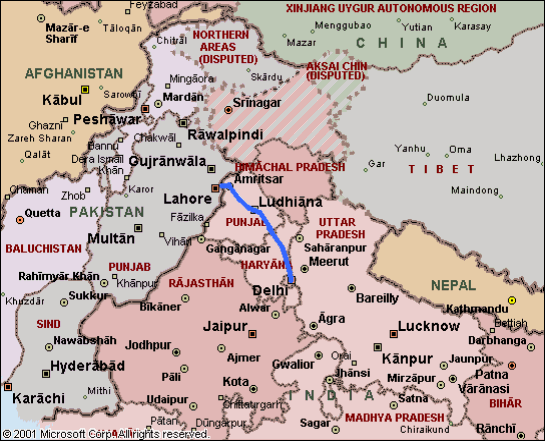

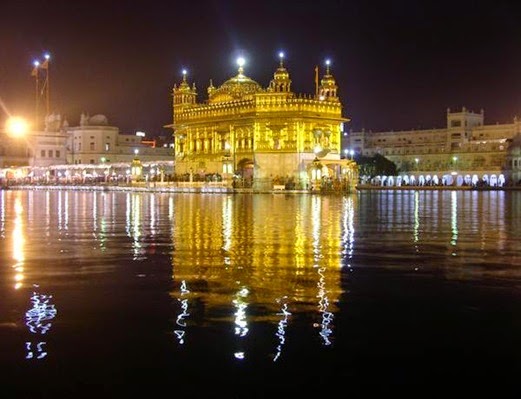
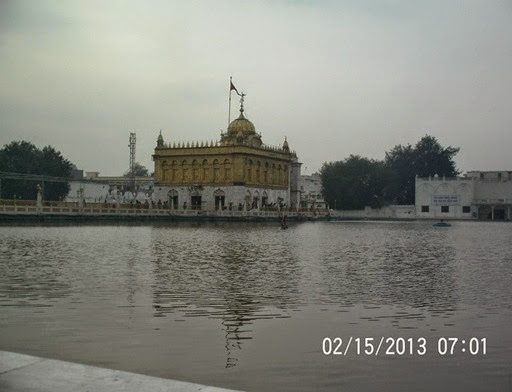

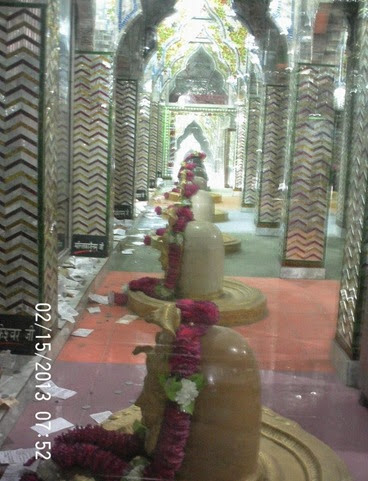
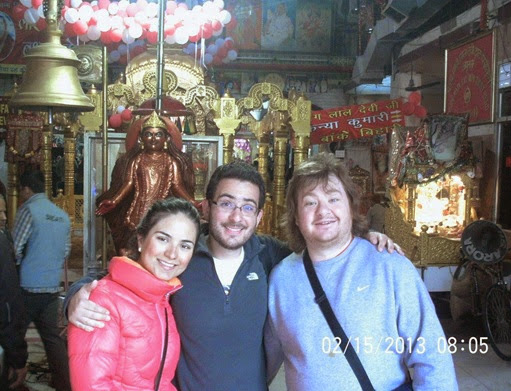
No comments:
Post a Comment